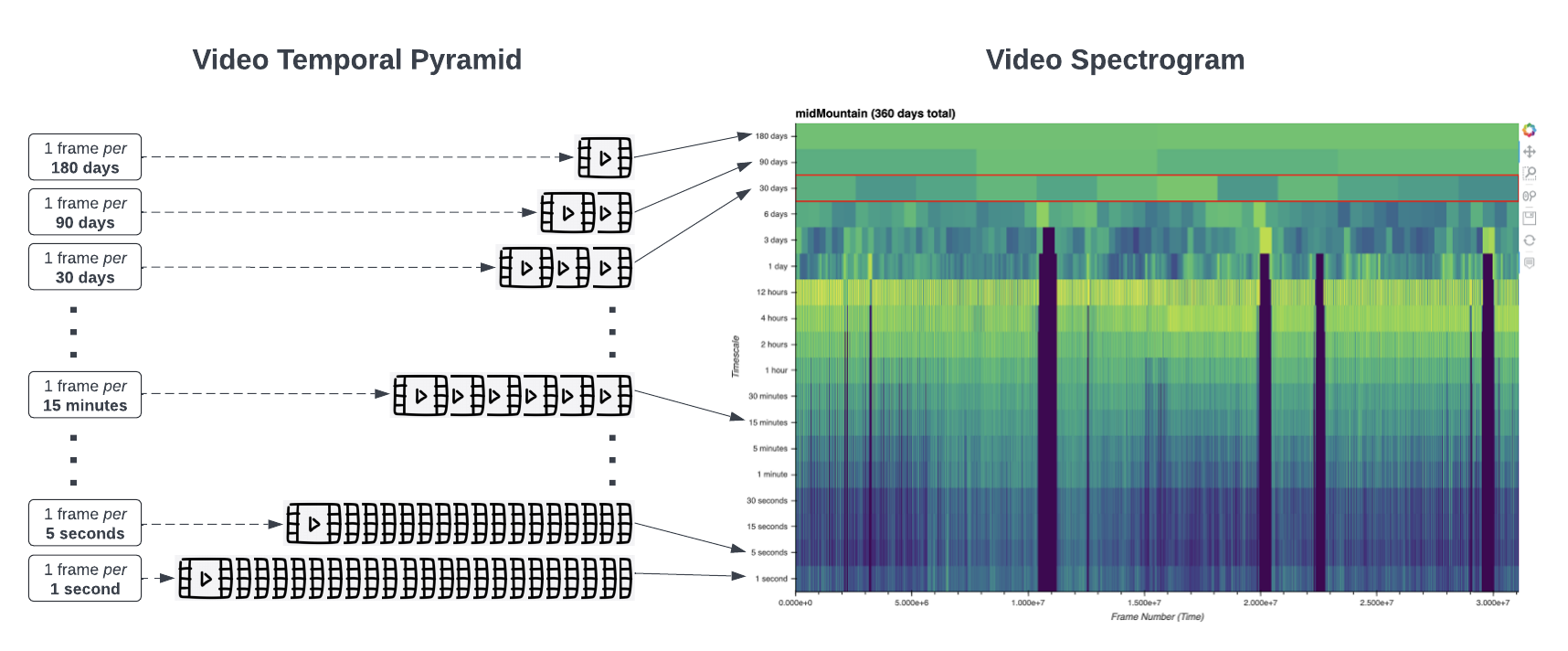Visualizing the Passage of Time with Video Temporal Pyramids
Melissa E Swift, Wyatt Ayers, Sophie Pallanck, Scott Wehrwein
View presentation:2022-10-19T14:00:00ZGMT-0600Change your timezone on the schedule page
2022-10-19T14:00:00Z

Prerecorded Talk
The live footage of the talk, including the Q&A, can be viewed on the session page, Temporal Data.
Fast forward
Abstract
What can we learn about a scene by watching it for months or years? A video recorded over a long timespan will depict interesting phenomena at multiple timescales, but identifying and viewing them presents a challenge. The video is too long to watch in full, and some things are too slow to experience in real-time, such as glacial retreat or the gradual shift from summer to fall. Timelapse videography is a common approach to summarizing long videos and visualizing slow timescales. However, a timelapse is limited to a single chosen temporal frequency, and often appears flickery due to aliasing. Also, the length of the timelapse video is directly tied to its temporal resolution, which necessitates tradeoffs between those two facets. In this paper, we propose Video Temporal Pyramids, a technique that addresses these limitations and expands the possibilities for visualizing the passage of time. Inspired by spatial image pyramids from computer vision, we developed an algorithm that builds video pyramids in the temporal domain. Each level of a Video Temporal Pyramid visualizes a different timescale; for instance, videos from the monthly timescale are usually good for visualizing seasonal changes, while videos from the one-minute timescale are best for visualizing sunrise or the movement of clouds across the sky. To help explore the different pyramid levels, we also propose a Video Spectrogram to visualize the amount of activity across the entire pyramid, providing a holistic overview of the scene dynamics and the ability to explore and discover phenomena across time and timescales. To demonstrate our approach, we have built Video Temporal Pyramids from ten outdoor scenes, each containing months or years of data. We compare Video Temporal Pyramid layers to naive timelapse and find that our pyramids enable alias-free viewing of longer-term changes. We also demonstrate that the Video Spectrogram facilitates exploration and discovery of phenomena across pyramid levels, by enabling both overview and detail-focused perspectives.